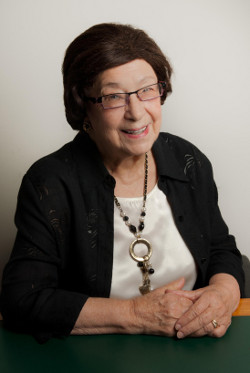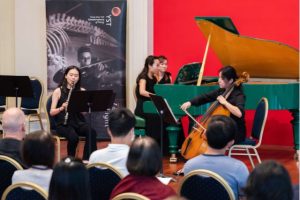 A soft spoken lady, I sat down with Dr. Solomon as she told me more about her work. A mother and a grandmother, she told me she just had arrived in Singapore after a work trip to Hong Kong, where she was there for a conference.
A soft spoken lady, I sat down with Dr. Solomon as she told me more about her work. A mother and a grandmother, she told me she just had arrived in Singapore after a work trip to Hong Kong, where she was there for a conference.
Her list of credentials seemed endless. With degrees in English, Education and Psychology, Dr Solomon has spent her professional life working in fields which combine all those disciplines. As an experienced adult educator, she has conducted courses on a variety of topics and was involved in teacher education.
It was during her clinical practice where she realized that there was something amiss in the way children were learning to speak read and write. She recounts, “I saw many children and teenagers, who came from English speaking homes, with literate parents, yet they were displaying signs of reading failures. I pondered on this and told myself I had to do something about this.”
As she investigated further, she realized one of the causes was due to the instruction and teaching method of English. From her research, she found two other causes of reading failures in normal children and children with dyslexia. The first cause was due to the insufficient use and coordination in the left and right hemispheres of the brain. The second cause was due to the nature of the English language.
To prove the second cause point, she asked me to read the following paragraph:
How on earth would you react to the creation of a bureau for treating heart, ears and head next to an eatery and a theatre. The idea is to bear the treatment, follow with a beautiful meal of steak or ocean bream and then meander or to see, maybe Sean Bean.
She adds, “Did you notice how all the ‘ea’ underlined in the above paragraph were pronounced differently. Therefore we cannot assume that the English has a set of phonic rules or groups (such as ‘ea’), because when they are used in a different word, they are pronounced in a different manner.”
I was told that 75% of English words are irregular – that means most words in English are not determined by their spelling. In fact, the spelling can sometimes be misleading! English is not a phonetic language, that’s what makes it confusing sometimes. For example, the alphabet ‘C’ can be pronounced as ‘Ker’ as in Car, but also ‘Ssss’ as in Fence. Hence, the Reading for Sure™ was created.
Launched in 1990, this method takes into account a child’s brain development as a crucial element in effective reading instruction. In addition, Dr Solomon also came up with comprehensive resource books for teachers and parents who would like to adopt her program. These include, “Teaching Literacy from the Beginning”, “Start Reading”, “STEPPING AHEAD!”, “Dialogue Rhymes and Jingles” and “The Alphabet Song”.
Here is a nutshell of her programs:
Stepping Ahead! (2 – 3 years old)
Introducing the basic language and vocabulary skills to your child which includes:
- shapes recognising the shapes of the letters of the alphabet
- recognising that different letters have different sounds
- blending consonant and vowel sounds to say words and
- having a vocabulary of basic English words
Reading for Sure (4 – 6 years old)
Beginning with the System Teaching Kit, this system that introduces your pupil to our 24 Marking Symbols – the key to confidently pronouncing and reading English words. Each symbol is introduced in a separate session, with practice exercises, marked word lists, and marked stories to reinforce and expand the learning. While the beginning programs prevent reading problems, Reading for Sure also caters for the older reader who needs support in literacy skills.
What really interested me was how these Marking Symbols were creatively used, to allow children to articulate the words correctly. For example, children will learn how the word ‘lamb’ is pronounced with a silent b, and the silent letter in the word will have a mark below it, indicating that the ‘b has gone to bed’, therefore it is silent. It is ‘woken up’ for spelling!
Dr Solomon continues to travel extensively to parts of South East Asia, helping children in both rural and developed countries. She plans to extend her program in Singapore, China, Cambodia and India. As we parted, I could not help but to marvel at Dr Solomon’s tenacity and passion, to reach out to as many parents, teachers and children all over the world.
You may visit her website for more information on Dr Julia Solomon and The Reading For Sure Program.
Reading For Sure Programme classes will soon be available in Singapore. For enquiries please contact albert.ng@quantum.com.sg
By Michelle Ang














































Leave a Comment: